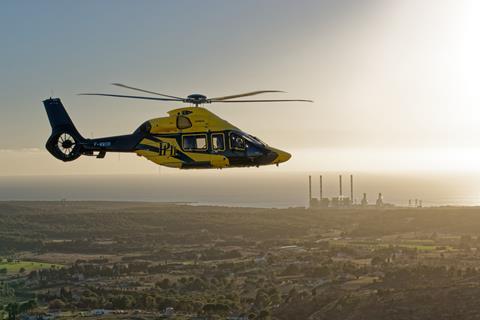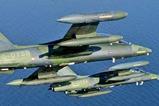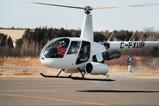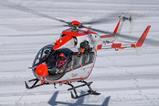Airbus Helicopters and US operator PHI are preparing for the start of route-proving flights in the Gulf of Mexico using the airframer’s new H160 medium-twin.
PHI has already taken delivery of the four helicopters it will use for the initiative, says H160 programme manager Gilles Armstrong, and route-proving activities will start “very soon”.

“It is one our top moments to start this route proving with PHI – it is very important to us for the H160 in the energy segment,” Armstrong told journalists at the airframer’s Marginane site in France on 13 February.
The pair had hoped to begin the work earlier – it was the subject of a 2021 agreement also involving Shell – but were held up by the late-running US certification of the type.
That validation was finally received in July 2023 and Airbus Helicopters is now working with the Federal Aviation Administration (FAA) to finalise its pilot training programme for the H160.
“Then it will allow us to qualify PHI pilots and get started. We are very, very close,” says Armstrong.
Airbus Helicopters has also used the delay to install at its US facility “some specific equipment that is expected in the PHI configuration”.
Backlog for the H160 now extends to 110 units, including 30 of the M-model military variant ordered by the French defence ministry as part of its tri-service HIL programme. Although the airframer revealed a 50-unit deal with Chinese operator GDAT last year, not all these helicopters are yet in the orderbook.
Armstrong says the company’s short-term challenge is to raise output from the 20 examples produced in 2023 to 40 by around 2026. “Effectively it’s as soon as we can,” says Armstrong. “There’s this really big backlog to deliver and we want to get there as soon as possible.”
The H160 is an all-new helicopter, even down to its twin Safran Helicopter Engines Arrano powerplants.
These are performing in line with expectations, says Armstrong. “The feedback from customers is excellent. The fuel consumption numbers are excellent,” he says.
Airbus Helicopters is also marketing a “multi-mission” package for the H160 that allows an operator to “reconfigure” the cabin “with not a lot of downtime”.
“I think that’s something that is going to matter a lot in the longer term. Having this ability to go from one configuration to another very easily is going to be a real boost to the resale value of the H160 compared to the competition.
“It’s something for which we see quite a lot of appeal for certain types of customers.”
It will also enable changes to the configuration to be made late in the final assembly process “and it allows us to do it in a normal production flow”, says Armstrong.
Besides the FAA approval in 2023, certification was also received from the Canadian regulator last December, followed by the Indian authorities in early 2024.
Flight testing of the initial two aircraft in a law enforcement configuration, destined for the French Gendarmerie Nationale, is about three-quarters complete, adds Armstrong. Two further examples for the service are also on the Marignane production line.














































